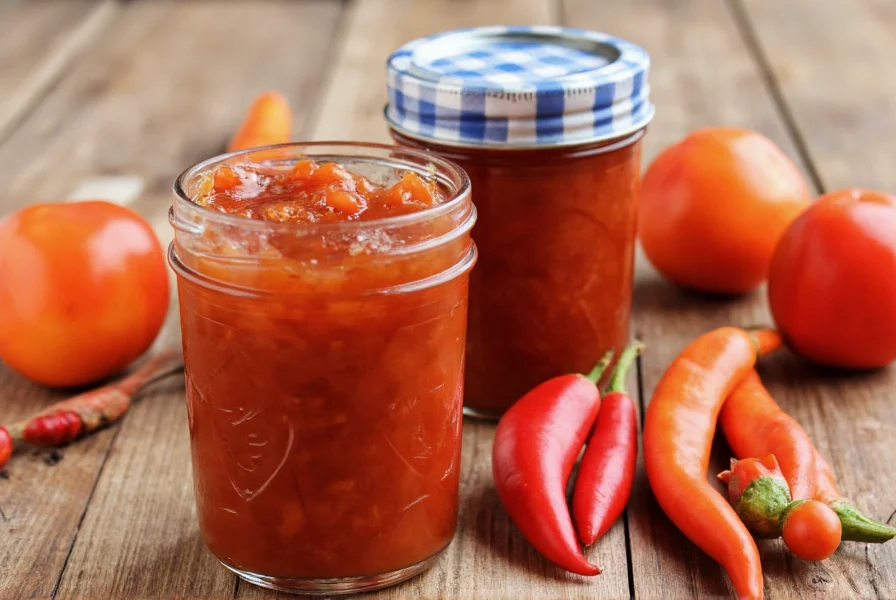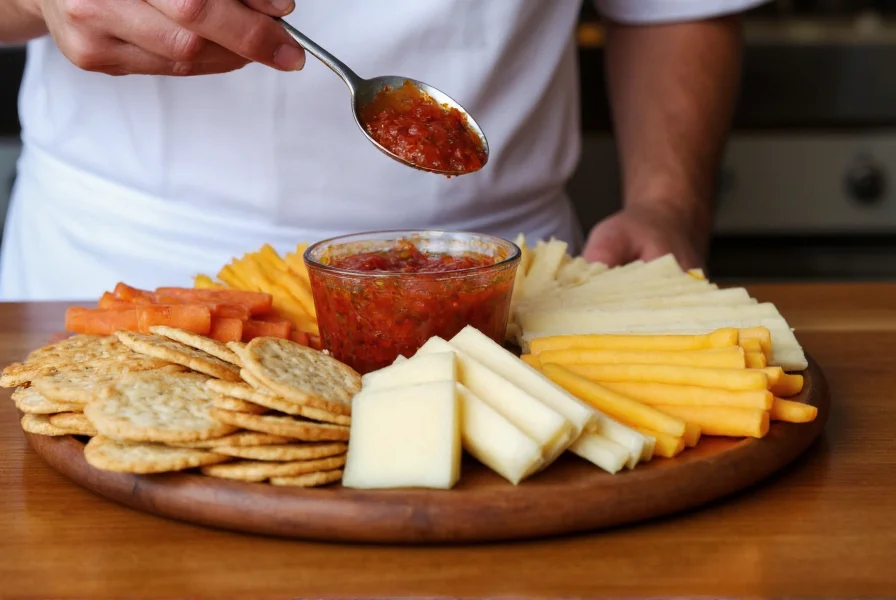Creating exceptional pepper jam requires understanding the balance between heat, sweetness, and acidity. This versatile preserve has gained popularity among home canners and professional chefs alike for its ability to transform simple ingredients into complex flavor experiences. Whether you're working with bell peppers, jalapeños, or exotic varieties like habaneros, the right technique ensures a perfect texture and balanced flavor profile every time.
The Essential Components of Quality Pepper Jam
Successful pepper jam hinges on four critical elements: pepper selection, sugar ratio, acid content, and pectin management. The type of pepper you choose dramatically affects both the heat level and flavor complexity. While bell peppers create mild, sweet preserves, varieties like serrano or Thai chili peppers deliver significant heat that requires careful balancing with sweet components.
Understanding the natural pectin levels in different peppers prevents common issues like runny jam. Peppers naturally contain lower pectin than fruits like apples or citrus, which is why most recipes include added pectin or high-pectin fruits like apples or citrus zest. The sugar-to-pepper ratio typically ranges from 1:1 to 2:1, depending on desired sweetness and the pepper's natural sugar content.
| Pepper Variety | Heat Level (Scoville) | Best For | Sugar Ratio |
|---|---|---|---|
| Bell Peppers | 0 SHU | Mild, sweet preserves | 1:1 |
| Jalapeño | 2,500-8,000 SHU | Classic sweet-spicy balance | 1.5:1 |
| Serrano | 10,000-23,000 SHU | Bolder flavor profiles | 2:1 |
| Habanero | 100,000-350,000 SHU | Intense heat with fruit pairings | 3:1 |
Mastering the Pepper Jam Making Process
The key to perfect homemade pepper jam lies in proper preparation and cooking technique. Start by selecting firm, blemish-free peppers at their peak ripeness—red and yellow peppers contain more natural sugars than green varieties. After thorough washing, remove stems, seeds, and membranes (keeping some seeds increases heat). Finely chop peppers or process them in a food processor for consistent texture.
Many successful pepper jam recipes for beginners incorporate complementary fruits like pineapple, mango, or apples to enhance flavor complexity and provide natural pectin. The cooking process requires careful attention to temperature: bring the mixture to a full rolling boil that cannot be stirred down, then maintain this boil while adding sugar. Most recipes require 15-25 minutes of active boiling after sugar addition to achieve proper setting.
Testing for doneness using the plate test remains the most reliable method: place a small plate in the freezer before cooking, then drop a teaspoon of jam onto the cold plate. If it wrinkles when pushed with your finger after 30 seconds, it's ready. This traditional technique works better than timer-based methods, which don't account for variables like humidity and altitude.
Creative Applications for Pepper Jam
While many people serve pepper jam simply on toast, its culinary potential extends far beyond breakfast. The sweet-heat profile makes it an exceptional pepper jam for cheese pairing, particularly with creamy cheeses like brie, goat cheese, or sharp cheddar. Spread a thin layer on crackers with your favorite cheese for an instant gourmet appetizer.
Chefs frequently use pepper jam as a glaze for proteins—brush it on chicken, pork, or salmon during the last 5-10 minutes of cooking. The sugar content caramelizes beautifully while the acidity cuts through richness. For an impressive dinner party trick, create a spicy fruit pepper jam combination by adding diced peaches or pears to red bell peppers, resulting in a sophisticated condiment that pairs beautifully with duck or pork tenderloin.

Troubleshooting Common Pepper Jam Issues
Even experienced canners occasionally encounter problems with their preserves. If your pepper jam turns out too runny, it likely didn't reach the proper gelling temperature (220°F at sea level) or lacked sufficient pectin. Fortunately, you can often fix runny jam by reheating it with additional pectin or lemon juice.
Conversely, overly firm pepper jam usually results from excessive pectin or overcooking. While you can't reverse this completely, thinning the jam with a small amount of apple juice or vinegar can improve spreadability. For flavor balance problems, consider that heat perception diminishes over time—your jam will taste less spicy after 2-4 weeks of storage as flavors meld.
Proper canning technique ensures safety and longevity. Always use tested recipes with adequate acid content (pH below 4.6), process jars in a boiling water bath for 10-15 minutes depending on altitude, and verify seals before storage. Never skip the headspace recommendation—typically ¼ inch for jams—as this allows for proper vacuum formation during cooling.

Storage Guidelines for Maximum Freshness
Correctly processed and sealed jars of pepper jam maintain quality for 12-18 months in a cool, dark pantry. Once opened, refrigerate and consume within 3-4 weeks. For extended freshness, some home canners freeze small batches of jam in ice cube trays, then transfer the frozen cubes to airtight containers—this method preserves flavor for up to 12 months.
Always inspect jars before use: discard any with bulging lids, spurting liquid upon opening, or off odors. Properly stored pepper jam should maintain its vibrant color and characteristic sweet-spicy aroma. If you notice mold or fermentation bubbles, discard the entire contents—even if only a small portion appears affected.
What's the difference between pepper jelly and pepper jam?
Pepper jelly has a clear, gel-like consistency with no solid pieces, while pepper jam contains actual fruit pulp from peppers, creating a thicker spread with visible pepper pieces. Jam typically has more body and texture than jelly.
Which peppers work best for sweet pepper jam?
Red and yellow bell peppers work best for sweet pepper jam as they contain more natural sugars than green peppers. For sweet-spicy combinations, jalapeños paired with fruits like pineapple or mango create excellent flavor balance.
How can I reduce the heat in spicy pepper jam?
To reduce heat in spicy pepper jam, remove all seeds and white membranes from peppers, which contain most capsaicin. You can also balance heat with additional sugar or sweet fruits like apples or pears. Adding acid from lemon juice can also help mellow perceived spiciness.
Can I make pepper jam without added pectin?
Yes, you can make pepper jam without added pectin by combining peppers with high-pectin fruits like apples, citrus zest, or quince. The cooking process will take longer (45-60 minutes) to reduce liquid and achieve proper setting, and the final texture will be less firm than with added pectin.
What foods pair well with pepper jam besides cheese?
Pepper jam pairs exceptionally well with roasted meats as a glaze, enhances sandwiches with turkey or ham, complements cream cheese in pastries, and adds complexity to salad dressings. It also works beautifully with savory breakfast items like omelets or biscuits.











 浙公网安备
33010002000092号
浙公网安备
33010002000092号 浙B2-20120091-4
浙B2-20120091-4